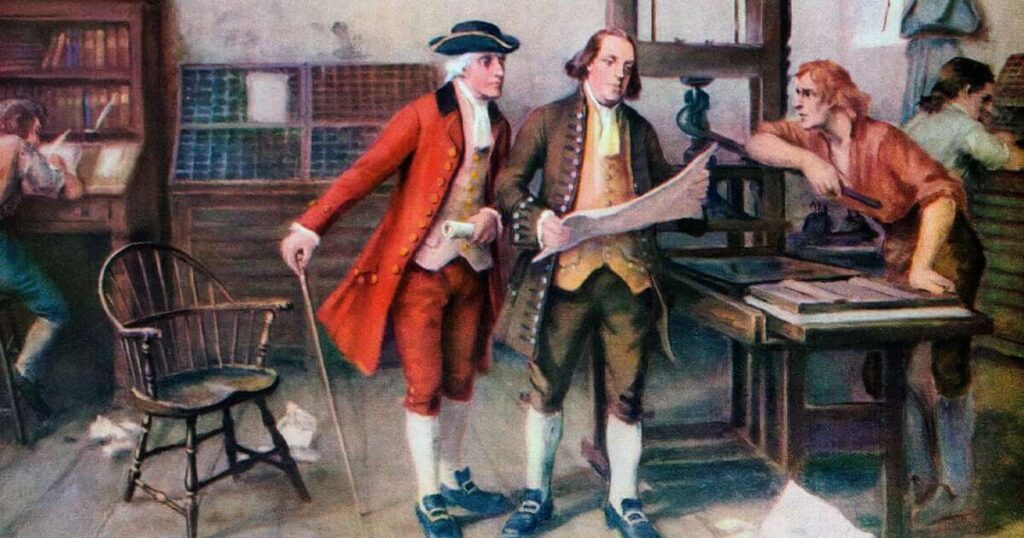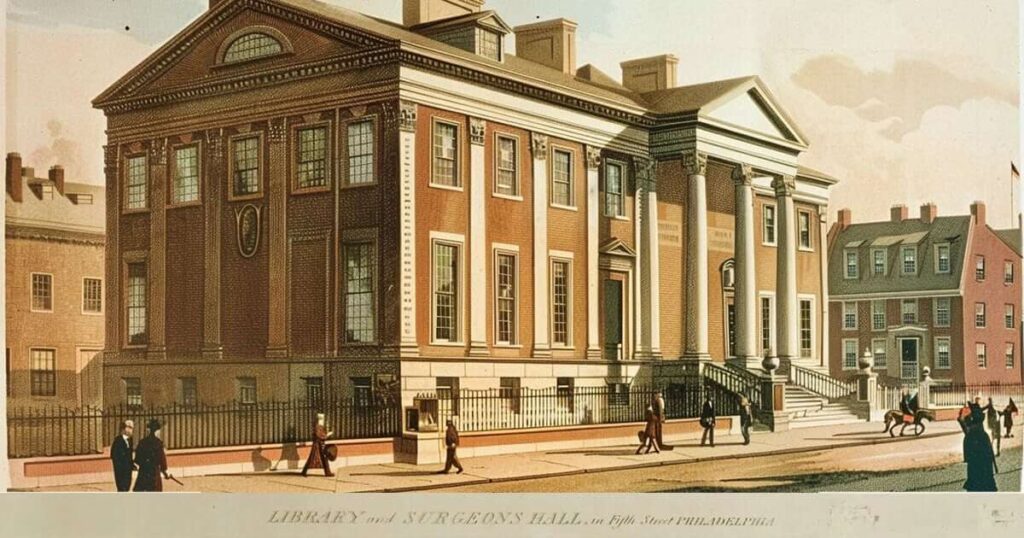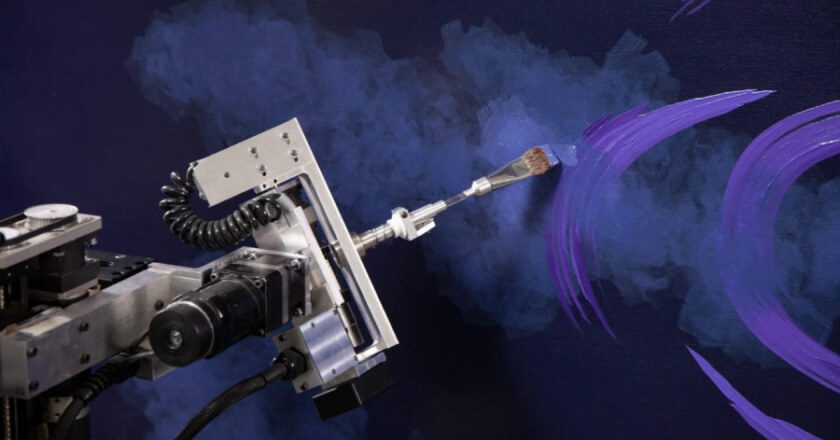Get Inspired
Build the life you love. Learn more about fusioneering:

Posted on May 6, 2023 in Inspirational People
Benjamin Franklin was a polymath statesman, writer, scientist, printer, progressive philosopher, and prolific inventor – as well as one of the most influential Founding Fathers of the United States. Regardless of what country you hail from, you’ve almost certainly heard something about the man. A genius ahead of his time, Franklin’s insatiable curiosity led him to excel in multiple disciplines, igniting innovation and leaving an indelible mark on fields as diverse as science, politics, literature, and beyond. His ability to seamlessly blend disparate fields of study is a testament to his unique intellect and serves as an inspiration for contemporary innovators seeking to break free from the constraints of conventional thinking.
If you live in America, you’ve no doubt heard countless stories of the man’s innumerable achievements and societal contributions. As we explore how Franklin’s multidisciplinary approach revolutionized our understanding of the world and shaped the course of history, there are simply too many instances to list – so join us as we take a look at just five of Benjamin Franklin’s most innovative and influential inventions.
Read More: Follow Modern Inventor Paul Kirby’s Path of Innovation
You might be under the common impression that Ben Franklin invented electricity. Franklin did not discover electricity (that honor mostly belongs to English scientist William Gilbert, though ancient societies were vaguely aware of electricity and some of its effects), but Franklin did deepen society’s understanding of electricity and lightning.
The image of Franklin flying a kite with a key tied to the string is incredibly iconic – and while it might seem crazy, the event also epitomizes the man’s ability to blend and fuse disciplines. In the late 1740s, Franklin had sold a number of his possessions to fund an obsessive interest in electrical energy. Franklin was sure that lightning was one of the greatest examples of electrical discharge present on Earth… he just needed a way to test his theory.

By integrating principles of physics, particularly the conductive properties of metal, with his understanding of atmospheric electricity, Franklin developed a method to attract and capture the electrical charge from a storm-covered sky.
In June of 1752, Franklin supposedly attached a metal key to a line of wet kite string and flew the kite in a powerful thunderstorm. In popular media, the experiment is often depicted with Franklin flying the kite and waiting to be struck by lightning, but Franklin was well aware of how dangerous this approach would be – his actual intent was to collect the electrical buildup from inside a cloud. A current and a string of sparks are said to have flown down the kite line to Franklin’s hand, confirming his theory that electricity is present in the atmosphere and behaves like a current. This event also led Franklin to theorize that metal grounding rods could protect the increasingly tall buildings around the world from the threat of lightning, leading to the invention of the lightning rod.
Benjamin Franklin’s invention of the Franklin stove revolutionized heating technology in the 18th century. The open fireplaces of the day were inefficient for heating and cooking as well as being hugely hazardous causes of injuries and structure fires, prompting Franklin to hunt for a solution. A new heating and cooking method was needed to enhance efficiency, conserve resources, and reduce the risk of fire.

In 1741, drawing upon his understanding of physics, Franklin designed a cast-iron stove with a unique airflow system. The stove featured a hollow baffle that extended the path of the combustion exhaust, forcing expelled gasses to travel beneath and around the stove before exiting through a flue. This ingenious arrangement increased the stove’s efficiency by maximizing heat transfer and retaining more warmth within the living space. The new stove also benefited from Franklin’s metallurgy expertise. His choice of cast iron as the primary material for the stove allowed for better heat retention and durability. The cast iron absorbed heat efficiently and radiated it slowly, ensuring a steady and consistent warmth over an extended period.
The stove’s impact was significant, improving fuel economy, promoting cleaner environments, reducing accidents, and inspiring many modern heating technologies.
In the 1780s, Franklin was suffering from both nearsightedness, which made it challenging to see distant objects clearly, and presbyopia, an age-related condition that impairs near vision. Franklin recognized the need for a solution that addressed both of these visual challenges.

Combining his scientific curiosity with his personal experience, Franklin devised a design that incorporated lenses with different focal lengths into a single pair of glasses. The upper portion of the lenses corrected distance vision, while the lower section focused on close-up reading.
Franklin’s interdisciplinary approach brought together his knowledge of optics, gained from his experiments with light and lenses, and his understanding of the intricacies of human vision. The result was a practical and elegant solution that significantly improved the quality of life for people with both nearsightedness and presbyopia, making bifocals a widely adopted solution to this day.
Related: Another Innovator with Optics on the Mind – Leonardo da Vinci
When Franklin was appointed as the first Postmaster General of the American Colonies in 1753, he recognized the need to revolutionize the way mail was being handled and delivered. Leveraging his background in business and his understanding of communication networks, Franklin implemented various improvements that elevated and transformed the American postal system.

One of Franklin’s key contributions as Postmaster General was the establishment of standardized shipping rates, which brought consistency and fairness to postal services across the colonies. This merging of business principles and public service aimed to create a reliable and accessible communication network that catered to the needs of individuals and businesses alike. Franklin also understood the need for efficiency and reliability if the system was to succeed. Drawing upon his extensive knowledge of geography and transportation, he identified the most strategic routes for mail delivery, ensuring that communication reached even the most remote corners of the burgeoning nation. By leveraging his understanding of logistics and planning, Franklin optimized the efficiency of the postal system, reducing delivery times and improving the reputation of the government service.
A scientist himself, Franklin also encouraged the adoption of new tech and innovations, such as improved postal vehicles and more efficient modes of transportation, to expedite the delivery of mail. By blending technological progress with his administrative acumen, Franklin propelled the postal system into a new era, enabling faster and more reliable communication between individuals and communities. The enduring legacy of Franklin’s contributions to the postal system serves as a testament to the power of interdisciplinary thinking in solving complex societal challenges and advancing the progress of a nation.
Related: More Societal Change Through Technological Innovation: The Story of Ada Lovelace
When observing Ben Franklin’s polymathic genius, it should come as no surprise that the man loved to read. Reading was the primary means for Franklin’s acquisition of wide-ranging knowledge, and it was his belief that greater access to literature and information for all people would greatly improve society at-large.

Founded in 1731, the Library Company of Philadelphia became the first subscription library in America, serving as a beacon of intellectual enlightenment in the colonial era. Franklin saw the Library Company as a means of democratizing knowledge, making books and intellectual resources accessible to a wider audience. By utilizing his understanding of business and finance – as well as his passion for literature, education, and community development – he devised a subscription model that allowed individuals from various backgrounds to contribute to and access the library’s growing collection.
The Library Company of Philadelphia became a multidisciplinary hub, housing books on a wide range of subjects including history, science, philosophy, and literature. This diverse collection reflected Franklin’s belief in the importance of interdisciplinary learning and the interconnectedness of knowledge across different fields. The library’s resources were not limited to a single discipline and were curated to provide a comprehensive and well-rounded intellectual experience. Franklin envisioned the library as a dynamic center for intellectual exchange, where individuals could engage in discussions, debates, collaborative learning, and the exchange of ideas.
Throughout his life, Benjamin Franklin embodied the power of blending disciplines, demonstrating that the most influential examples of innovation and progress arise from the intersections of knowledge. His holistic and interdisciplinary approach continues to inspire generation after generation, urging us to embrace diverse fields of study, break down disciplinary barriers, and seek solutions that transcend traditional boundaries.

As we reflect on this small portion of Benjamin Franklin’s legacy, let us remember the importance of interdisciplinary thinking in tackling complex challenges and nurturing intellectual growth. By embracing his spirit of curiosity, innovation, and integration, we can forge new paths of discovery and contribute to the advancement of society, just as Franklin did in his time. In the man’s own words:
“An investment in knowledge always pays the best interest.”
Seeking your own space for intellectual exchange and interdisciplinary discourse? Join the conversation on The Kirby Foundation Instagram, Facebook, and Pinterest pages, and don’t forget to follow our newsletter for inspiring updates!
Looking for another story of an inventor with provocative ideas? Check out the short documentary film, Brushstroke.
Are you interested in hearing the complete story of Paul and Dulcinea? Watch the video (nominated for Best Short Film at the 2021 Vail and Portland Film Festivals) for more info.
Want to be the first to know about every exciting new project at the Kirby Foundation?
Join Our Mailing ListBuild the life you love. Learn more about fusioneering:
Why pick which passion you should follow? Fusioneering allows you to cultivate many interests into something innovative and revolutionary.

Meet Paul and explore how blending your interests can empower you to follow your enthusiasm and bring your passions to life.